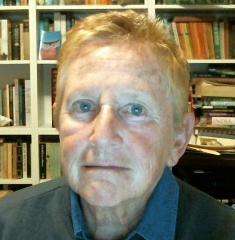Everyone with more than a passing interest in classical music will have some acquaintance with Dvořák’s Symphony no. 9, “From the New World”, possibly the most popular symphony in the western world, certainly voted as such by the Australian public recently. Any given performance has an enormous history for comparison, although in itself it rarely fails to please. Being quite a short work (generally around the 40 minute mark), it requires decent packaging with other pieces. In this instance, the Royal Stockholm Philharmonic Orchestra under Jukka-Pekka Saraste chose more recent works to introduce it, to which the Dvořák might be seen as ancestral in requiring a large orchestra which highlights different instruments and tonalities, as well as referring back to older or more traditional musics.
Ingvar Lidholm’s 1976 Greetings (from an old world), whose title cries out to be paired with “From the New World”, is as modern as they come. It is said to be derived from Heinrich Isaac’s Innsbruck, ich muß dich lassen (Innsbruck, I must leave you) from the latter half of the 15th century, but, to be honest, I would not have recognised it unbidden. The theme takes a while to emerge from introductory authoritative statements by the brass and percussion, to a gentler underlay of strings and piano. These alternative moods continue throughout, like waves crashing on a shore with gentler passages of woodwinds and strings evoking a calmer nature, concluding with a subdued drum roll. As in the succeeding works, the different instruments involved were all given their due and the dynamics were perfectly balanced.
Grażyna Bacewicz’s Piano Concerto is somewhat older, having premiered in 1949. It won second prize in the Chopin Competition of the Polish Composers’ Union – a first prize was not awarded, which says something about the standards of the day. As commentators tend to observe, it is not exactly redolent of Chopin’s music, being firmly in the tradition of 20th-century jaunty modernism. It interweaves several folk music themes including dance music, and romanticism does break through here and there. Pianist Peter Jablonski gave a most attentive reading, with powerful passages and sweeping arpeggios, and the orchestra again shone in its many different parts. The online recording provides an interview with Jablonski during the original interval, (in unsubtitled Swedish).
Dvořák's Ninth, of course, has many references, often attributed to First Nations as well as African American sources, which the composer himself detailed. Others argue that more weight should be given to his Bohemian background. Whatever the sources, the themes used are lyrical and evocative. Given the excellence of the playing of the two introductory works, it is not surprising that this was certainly in the upper echelons of Dvořák Ninths I've heard. Saraste clearly had a firm grip on the overall architecture of the work, as well as the many fine detailings of instrumental playing it involves. The first movement immediately demonstrated the well-articulated and balanced playing of the RSPO and featured extremely fine playing from the flutes and oboes, with a crisp and tidy brass finish, and the gentle ethereal clarinet in the second movement was a delight. One could go on endlessly picking out moments of brilliance and subtlety, such as the tiny but sonorous bassoon entry before the penultimate crescendo of the third movement, and their later, jollier contribution. There seemed to be no weak link; it was just a really great performance. The applause from the partially masked audience was quite rapturous. This was the kind of thing which is highly enjoyable to watch at home, but you really wish you could have been there.
This performance was reviewed from the KonserthusetPlay video stream


